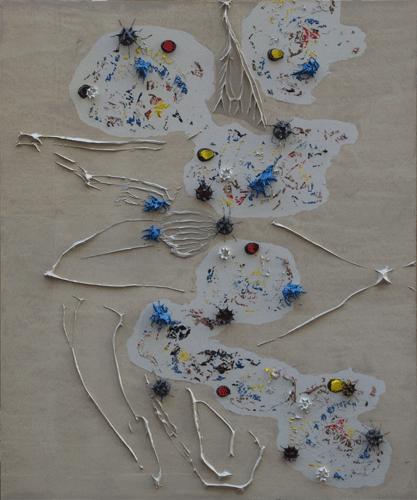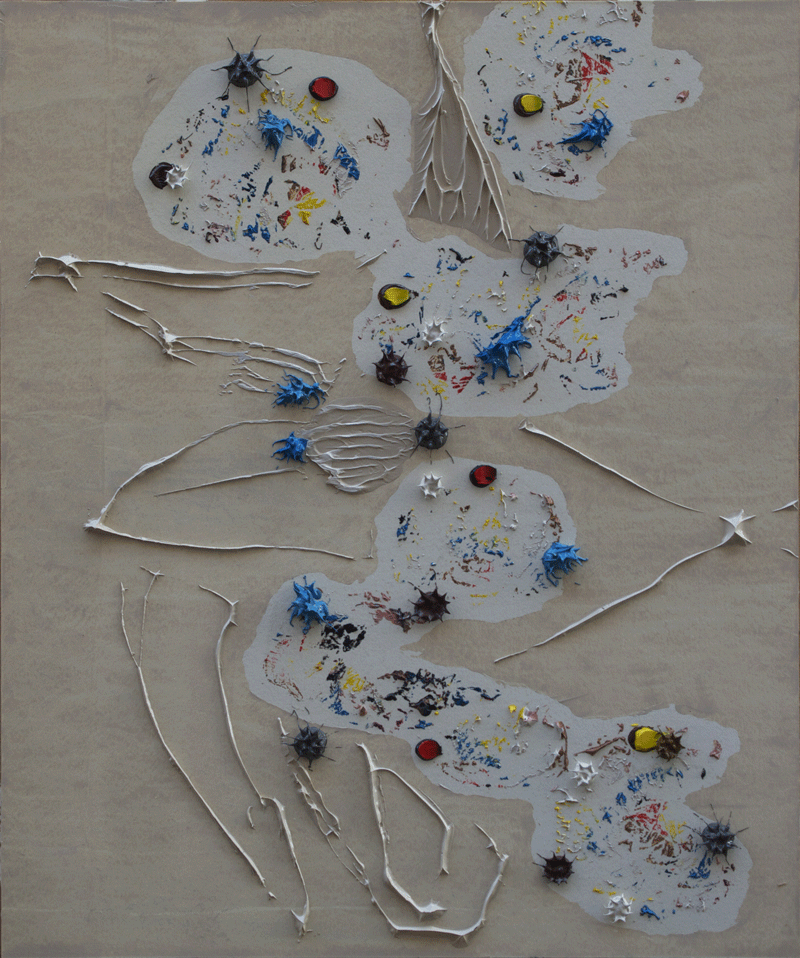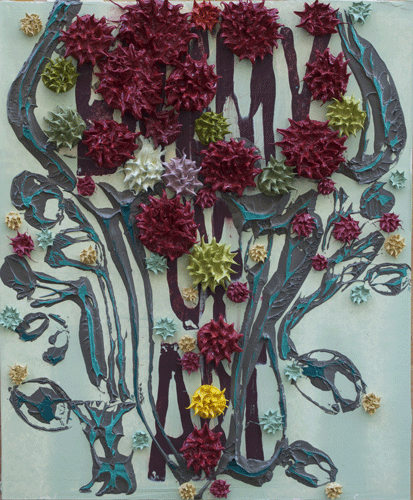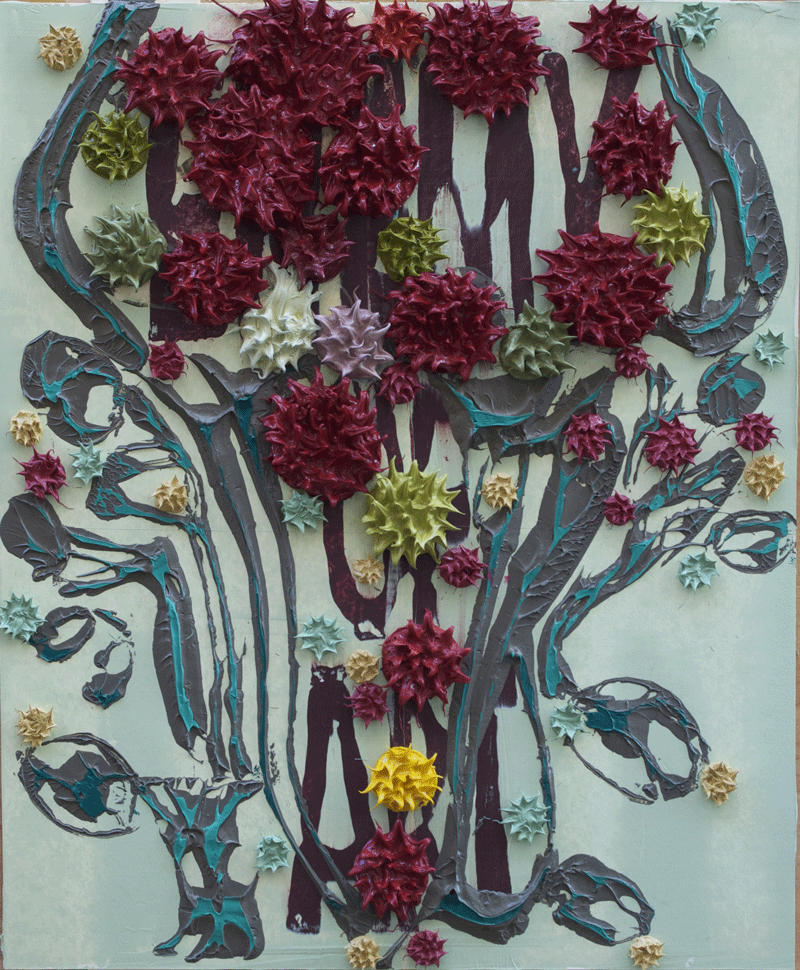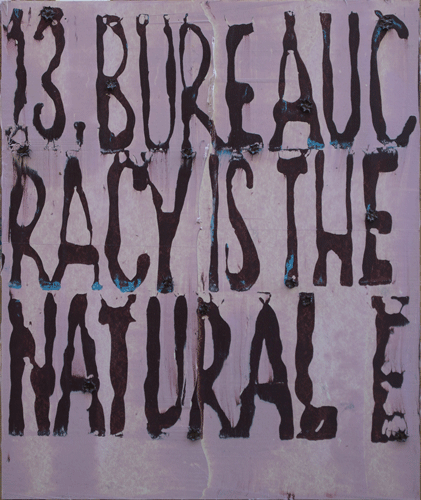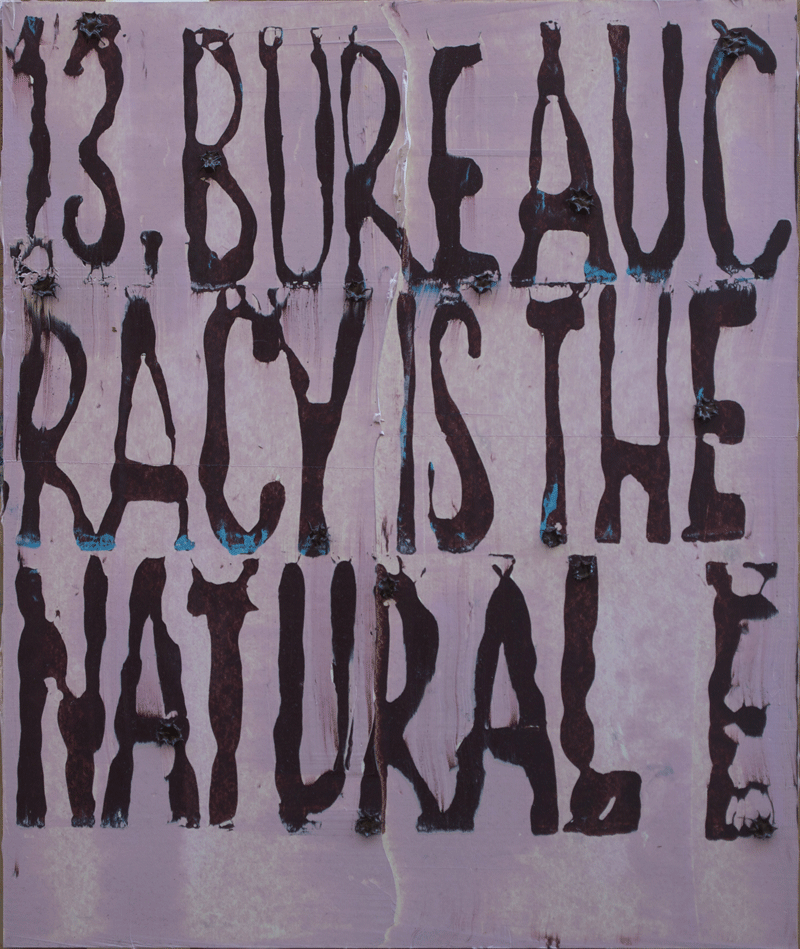February 28, 2011
February 27, 2011
Bienvenido Mister Roberts
Our friend Alberto (who works for my gallerist in Barcelona, Miguel Marcos), told me of his affection for this movie, whose theme is about the encounter of American and Spanish culture in the early 1950's. This has resonance for me since I was born in Madrid, spawn of a Filipina (my grandfather sent his children to Spain to finish their schooling) and an American, my father who was stationed at Torrej?n Air Base. It was an era when Franco was opening up Spain after the disaster of the Spanish Civil War. This film cast a light on two parts of the triangular aspect of my heritage, my ambition to connect to Spain is for me a dream come true.
From Wikipedia, a brief summary:
Welcome Mr. Marshall!, or ?Bienvenido, Mr. Marshall! is a 1953 Spanish comedy film directed by Luis Garc?a Berlanga and considered one of the masterpieces of Spanish cinema. It tells the story of a small Spanish town, Villar del R?o, which hears of the visit of American diplomats and begins preparations to impress the American visitors in the hopes of benefitting under the Marshall Plan.A central theme of the film is the stereotypes held by both the Spanish and the Americans regarding the culture of the other. Hoping to demonstrate the side of Spanish culture with which the visiting American officials will be most accustomed, the citizens of Villar del R?o (Soria) don unfamiliar Andalusian costumes, hire a renowned flamenco performer, and redecorate their town in Andalusian style. Later in the film, each of the central characters has a dream in which different aspects of stereotypical American culture and history are featured. One consists of a Western-like bar brawl, another the arrival of a conquistador on New World shores.
The film was entered into the 1953 Cannes Film Festival.
Spain Report
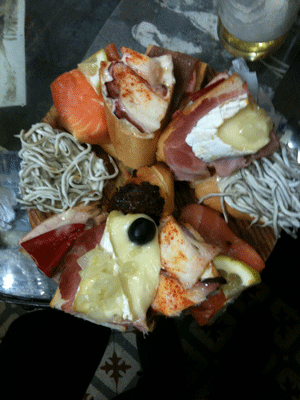
(Pictured: appetizers mentioned in this blogpost.)
Compared to last year, ARCO Madrid had about a third less exhibitors than before. This is not to depreciate last year's fair, which showcased Los Angeles with special exhibitions. It was well received, admittedly a tad less spectacularly than its presentation, truth be told. This year's fair economized in many small budgetary means (communications, special events, etc.) and while the price for admittance for the booths was the same as before, there was never a sense of deprivation or lack. There was a sense of space, and this was to the benefit of the presentation of artwork. What resulted was an art fair that was muted in a good way, less frenetic, less razzamatazz, less desperate in that perhaps the galleries involved were seasoned and survivors in a brutal worldwide economy. While the art works on the walls and in the spaces were less over the top, they were at the same time (strangely) more accomplished overall in terms of transgressive tropes and operations of technique. This has been a trend that I've seen in the art fairs over the years. It's as if art schools worldwide are producing precociousness at a price: artists who know too well what transgression looks like, or what we all have come to expect what breaks the mold. Perhaps I am seeing what I am prone to see, given what I've written about before in this blog here and here, that revolution has become rote. I also saw more than a few examples of shameless imitation, I'm thinking here of an Italian gallery featuring eerie art work doppelg?ngers of Raymond Pettibone in charcoal complete with literary/'zine/punk textual fragments. Was this strategy? Is there a doppelg?nger movement? Has our age of branding given way to willfully self conscious counterfeiting?
With only five days in Madrid (and Barcelona/Tossa, by the way), I only had time to furtively visit the Prado, the Reina Sophia and the Bornemisza Thyssen Museum. The good news is that Madrid is designed in such a way that these three spectacular museums are located in a small urban triangle along the Paseo del Prado, a rarity among cities of this class. Combine this with a new and excellent metro transportation system, the relative remoteness of the site of ARCO near the airport at Campo de las Naciones is no problem at all. With the neighborhood of Chueca cheek by jowl to the northwest of the museum triangle, an endless variety of nightlife effortlessly fills in the blanks in your social calendar. So what was in the museums? The Prado has what you would expect, but the bonus is that every viewing of the expected is certain to bring the unexpected... just what defines great art such as Diego Vel?zquez, Francisco Goya or Hieronymus Bosch. The Bornemisza Thyssen Museum is said to fill in the gaps of the other two great museums, it's full of work of artists known to a yanqui like myself, but with pieces that surprise every time. The Reina Sophia only had one show that I had time to visit, blogged about here, Is the War Over? Art in a Divided World (1945-1968), an exhibition that made me urgently want to rent a studio nearby for six months or so.
Visiting ARCO gave me an opportunity to solidify plans for a show of paintings at Galerie Pelaires, in Palma de Mallorca, (thanks to Miguel Marcos, my gallery in Barcelona) at the end of this coming summer. September will be a full month in that it will be bookended with a show in Pelaires in the beginning and a show at Tomio Koyama's Kyoto space at the end. It'll be a whirlwind, this summer, a good one.
February 23, 2011
February 18, 2011
Is the War Over?
Serge Guilbaut. ?La guerra ha terminado? from Museo Reina Sof?a on Vimeo.
There's a wonderful show on the fourth floor of the Reina Sophia, Is the War Over? Art in a Divided World (1945-1968), and I was lucky to find this video on the Reina Sophia web site to share it with my friends. When I go to ARCO, I usually frame my time in Madrid pretty tight to the fair. Enjoying the huge assortment of cultural offerings of Madrid is therefore a touch and go affair, and so it was again tonight as I able to visit the Reina Sophia during one of their late night (to midnight!) hours, specially designed to cater to the art fair participants who are otherwise captive to their exhibit booths for the lion share of the day. After grabbing beers and a plate of canap?s at the marvelous Cerveceria Los Gatos on Lope de Vega street, we walked off the grub for a few blocks to catch the few remaining hours of the museum. I was ready to marvel at the collection at the Reina Sophia, but this show blew me away with a whole giant floor (the Reina Sophia was a hospital in a former incarnation, I hazard to recall here), and it was one of those times when there was too much to take in, that "died and gone to heaven/kid in a candy shop" feeling. Most museums try to curate a show from their ambient collections, few succeed. This show at the Reina Sophia is a smashing success: deep content, a dizzying array of works from a huge spectrum of international artists, work after work from artists well known but not seen before (at least for a Yankee abroad like myself), a spotlight on history bright and searing... and all the while the ticking clock of my airline departure schedule loomed like a sword of Damocles. It was a desperate feeling albeit mixed with joy, trying to soak it all in and knowing that time is decidedly not on your side.February 15, 2011
Something's Happening
Too many blogposts are slipping through my fingers, most are too good to shrug off. Loyal readers might know that I tend to fall silent while I'm painting, only surging the posts in this blog between paintings. At the moment, I'm traveling to Madrid to visit my gallery Miguel Marcos at the ARCO art fair. Traveling will give me the the time to capture some if not most of the butterflies that got away. Please stay tuned for more to come...
February 11, 2011
February 8, 2011
Angst Journey, Where?s the Dead Man?s Chest
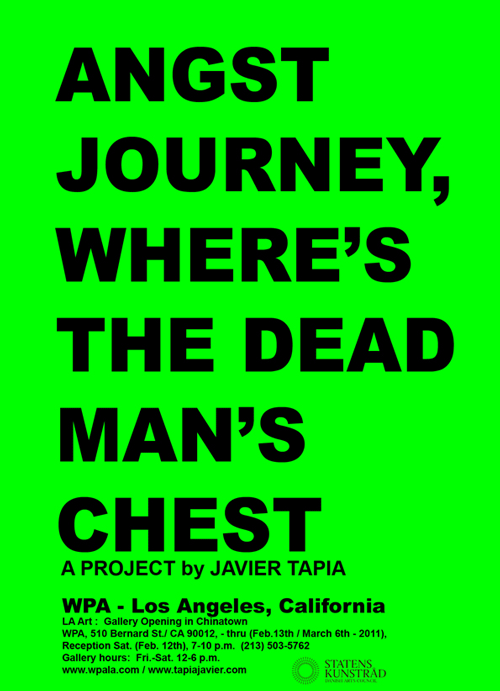
Javier's having an opening next door at WPA:
For Immediate Release:
LA Art : Gallery Opening in Chinatown
WPA, 510 Bernard St., L.A., (JAVIER TAPIA), ?(ANGST JOURNEY, WHERE IS THE DEAD MAN?S CHEST)? (description, sculpture-installation), thru (Feb. 13th until March 6th), Reception Sat. Feb. 12th, 7-10 p.m. (213) 503-5762
Gallery hours: Fri.-Sat. 12-6 p.m.
Press Release
The latest project of the Chilean artist Javier Tapia, with the title: Angst Journey, Where?s the Dead Man?s Chest, will be presented at WPA in China Town, Los Angeles.
The show, opening on Feb. 12th at 19 o?clock, is scheduled to last until March 6th of 2011.
In this project Javier Tapia will present an all over installation who aims to create a metaphorical space, commenting in aspects of the human condition and its struggles of ambition, weather they are mental or physical.
In order to build up this work, Javier Tapia is using mixed narrations; the first one is a direct reference to mountain climbing, more specifically, the climbing of mount Aconcagua, located in Chile, combined with the legend of El Dorado, used by aborigines in the Americas by the time the Conquerors of the New World arrived back in 1492.
The installation is combining mixed elements of theatrical scenography with aspects of scale model making, all together with sounds and light effects. The work invites the viewer to enter a pseudo monument, or a reference to a museum of natural history, where a sort of an ambiguous drama is being remembered and portrayed.
Javier Tapia was born in Santiago, Chile in 1972, and has been living in Europe since 1999. His education in Fine Arts has taken him to the Faculty of Fine Arts of the University of Barcelona between 1999 and 2001 and to a 6 years MFA program at the Royal Academy of Fine Arts between 2004 and 2010. In 2009 he was invited by UCLA to follow the program lead by Prof. Mary Kelly (US), where he had the chance to open his work to the artistic community of Los Angeles.
The exhibition is an initiative of the board members of WPA and is sponsored by the Danish Arts Council.
www.tapiajavier.com
www.wpala.com
www.kunst.dk
Bookmarkable
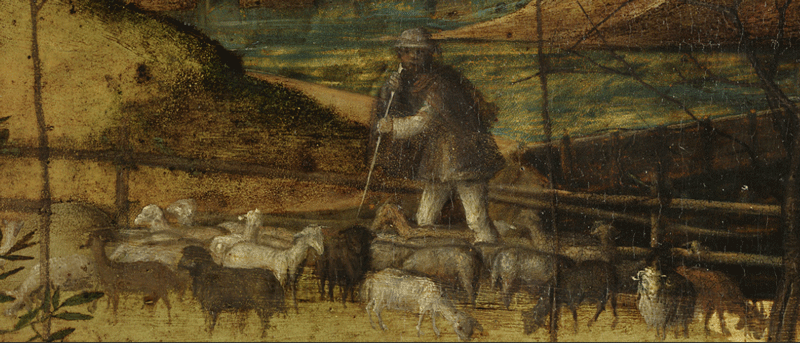
Roberta Smith reports today in the NYTimes about the Google Art Project, an online tour of selected offerings from 17 museums, a number of which I hope is growing:
It is very much a work in progress, full of bugs and information gaps, and sometimes blurry, careering virtual tours. But it is already a mesmerizing, world-expanding tool for self-education. You can spend hours exploring it, examining paintings from far off and close up, poking around some of the world?s great museums all by your lonesome. I have, and my advice is: Expect mood swings. This adventure is not without frustrations.
[...]
At the same time the chance to look closely at paintings, especially, as made things, really to study the way artists construct an image on a flat surface, is amazing, and great practice for looking at actual works. And while the Internet makes so much in our world more immediate, it is still surprising to see what it can accomplish with the subtle physicality of painting, whether it is the nervous, fractured, tilting brush strokes of Cezanne?s ?Ch?teau Noir? from 1903-4, at the Museum of Modern Art...
February 6, 2011
For Sale: Kiko's Duplex in Tossa de Mar
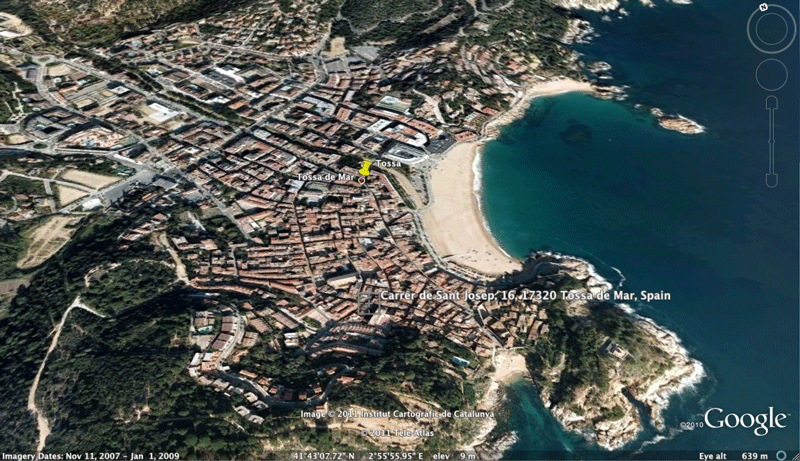
Faithful readers of this blog will no doubt remember my friend Kiko, Fransisco Noguera. Kiko is an old friend of mine who lives and works in the small former fishing village of Tossa de Mar in the Costa Brava of Spain. He wrote to me recently about his plans to build a small residential project in the heart of Tossa:
Un amigo arquitecto me ha hecho ?stos planos, para ver si alguien quiere comprar el piso d?plex por 195000 euros todo terminado y listo para entrar a vivir. Te envio una copia del proyecto para ver si hay alg?n americano interesado en el piso ? en la casa vieja.He reports that a friend, who is an architect, drew up plans with him for a duplex residential project (two units priced at 195,000 euros each, turnkey) and they wanted me to see if there might be any buyers for such a property in my world (which is bigger than the sum of Americanos alone in this blog, I assume). He also is open to selling the old existing property as is, the price being 177.000 euros, as I recall.
So I begin this blogpost with the most attractive feature of this property, the village of Tossa de Mar.
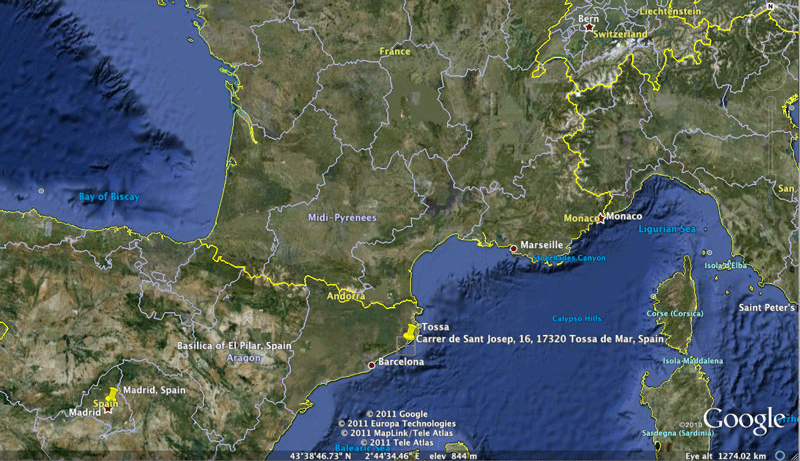
Tossa is located seventy five minutes north of Barcelona, an hour from the French border, close the inland city of Girona and Dali country with Figueres and Cadaquez nearby, all in the heart of the Catalan Costa Brava, where the Pyrenees meets the Mediterranean Sea. My argument for living here, aside from the wonderful appeal of Catalan culture, is the proximity to the heart of Europe. Either nearby Girona or Barcelona have train and air flight connections to all over the EU and beyond, Aix en Provence is only three or four hour's drive away, Paris is an overnight sleeper train's distance from here.
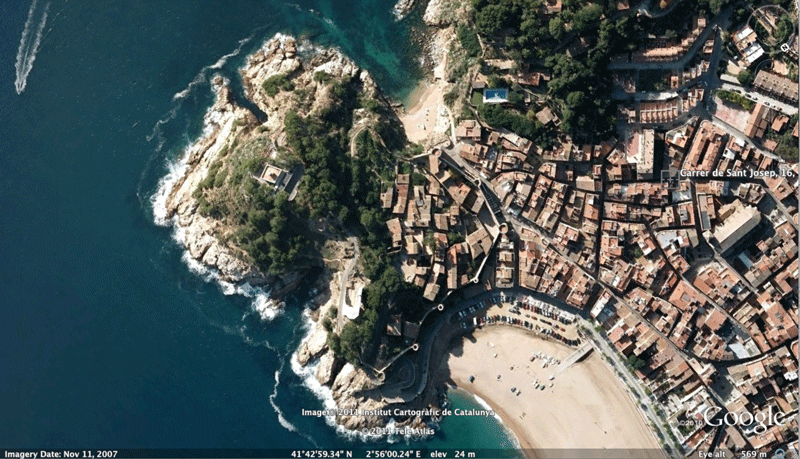
Flipping the map upside down to frame this image, you can see the location of the property (Carrer de Sant Josep No. 16, carrer=street in english) in relation to the big beach, to my favorite cove, Codolar, and Cap Tossa with its functioning lighthouse crowning the crest. St. Joseph street is punctuated with bars, restaurants and cafes, the latter being my favorite, Bar Josep. You can see the fortifications of the old city, built circa 900 A.D. The big beach is a minute walk away, the cove a winding journey through pedestrian only streets. The church is around the corner, so is my house on Sant Telm.
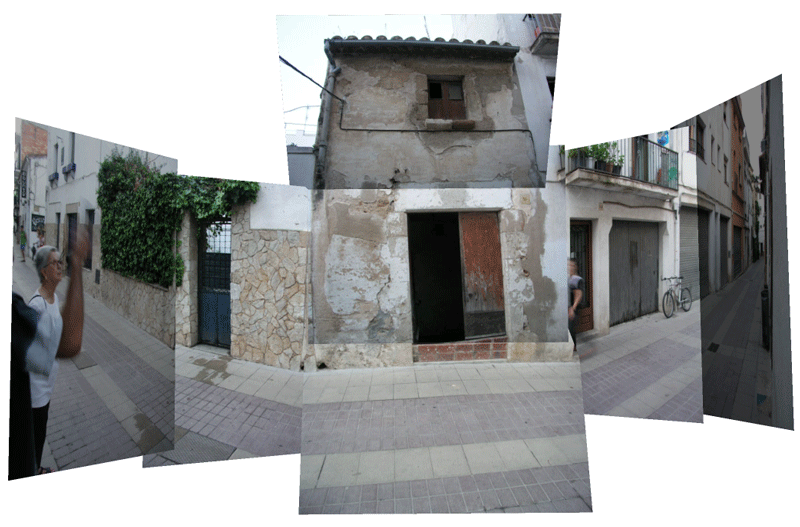
Here is the existing property, before they begin their renovation. More images here.
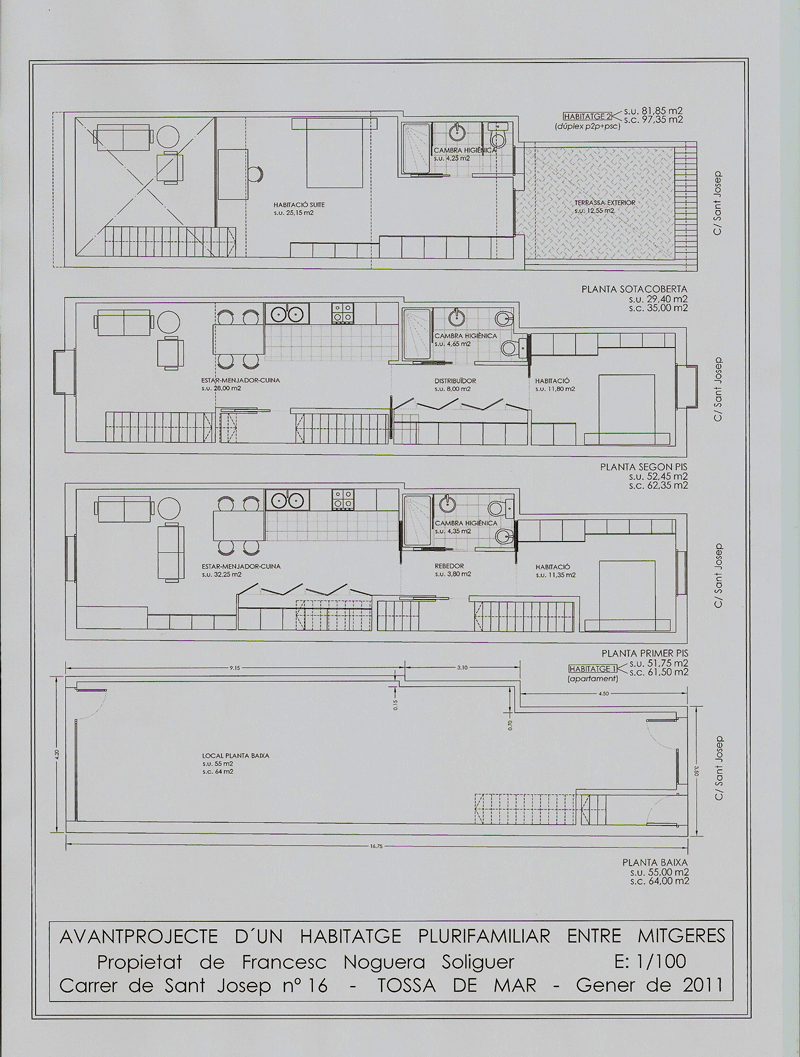
Here are the plans for the duplex. You might be able to read the plans, bottom floor appears to be commercial, a side stair takes tenants up to the duplexes above. The top floor has two bedrooms, with a terrace on the top floor. I would guess that the pricing would have to reflect this fact... so any of you who might be interested, this would be a first item to clarify as you proceed into this offering.
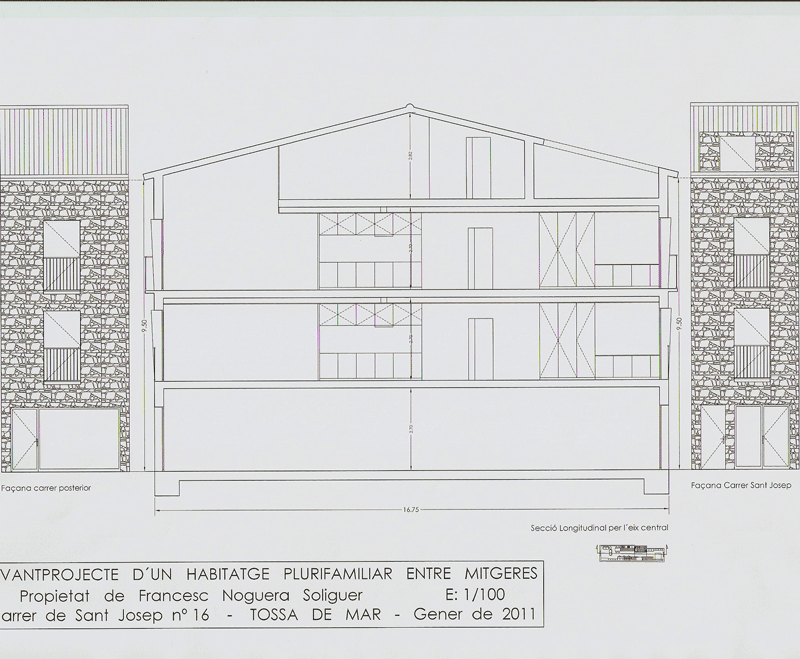
For more information, please feel free to either email me at dennis@dennishollingsworth.us or contact Kiko at kikonoguera@hotmail.com or call him directly: (+34) 646 604 352.
February 3, 2011
Goldmine
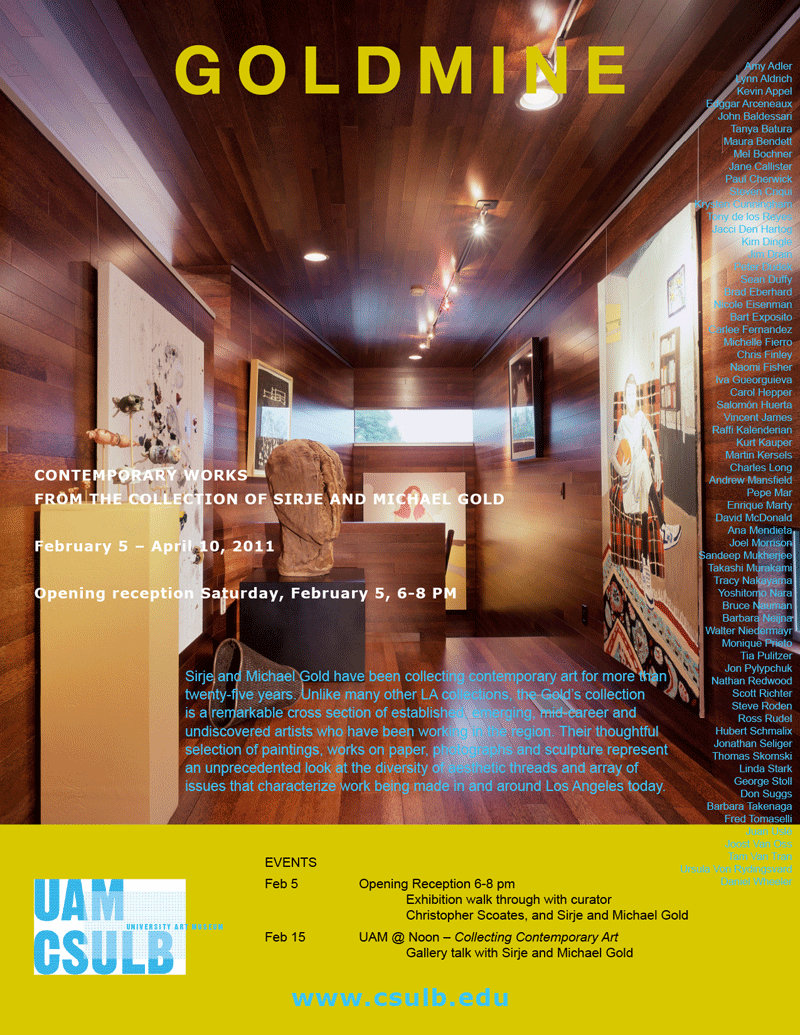
Friends and collectors, Michael and Sirje Gold are having a show of their collection at CalState Long Beach University Art Museum this Saturday. Locally, they are one of the hidden powers behind FOCA, an organization who underwrites artist's projects, among other things. They've been active in the LA art scene for quite some time, I always brighten up when I encounter them in the various happenings about town. Here is the description of the event from LimeLight Long Beach Events calendar:
Sirje and Michael Gold have been collecting contemporary art for more than twenty-five years. UAM Director Christopher Scoates is curating an exciting new exhibition focused around these two prominent and innovative Los Angeles collectors. Unlike many other LA collections, the Gold's collection is a remarkable cross section of established, emerging, mid-career and undiscovered artists who have been working in the region. Their thoughtful selection of paintings, works on paper, photographs and sculpture represent an unprecedented look at the diversity of aesthetic threads and array of issues that characterize work being made in and around Los Angeles today.
Stay Thirsty, My Friends.
This post is for a couple of my artist friends, Jxxxx & Axxxxx, who used to love to ridicule the persona "Most Interesting Man", an advertising vehicle for Dos Equis. I had the impression that this image of manhood really got under their skin.
Goldsmith is not this man. Still, he has more in common with him than you do. A montage of highlights from the real life of Jonathan Goldsmith might include (had there been cameras present) footage of him rescuing a stranded climber on Mt. Whitney, saving a drowning girl in Malibu, sailing the high seas with his friend Fernando Lamas (the inspiration for his Interesting persona and, according to Goldsmith, ?the greatest swordsman who ever lived in Hollywood?), and starting a successful network marketing business (?I was a hustler, a very good hustler?), which, for a while, anyway, enabled him to flee Hollywood for an estate in the Sierras. Among the outtakes might be glimpses of his stint as a waterless-car-wash entrepreneur. ?I love the old philosophers,? he said. ?I have a large library. I am not a die-hard sports fan. I love to cut wood.?
February 1, 2011
Hallowed Ground (Updated)
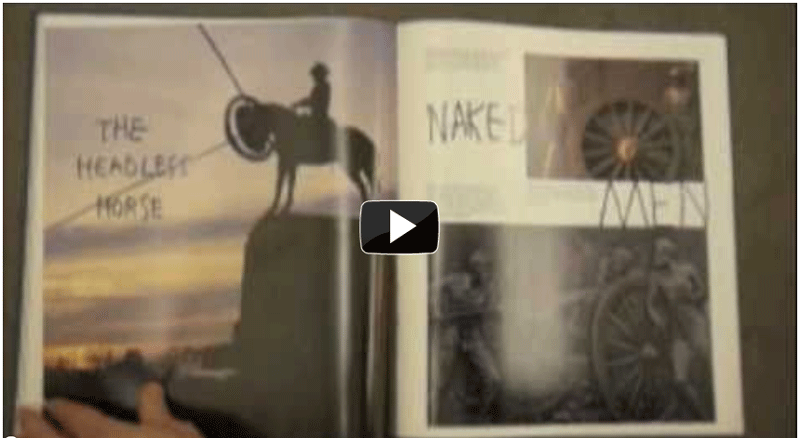
(Note: This blogpost/video has been mediated until further notice.)
